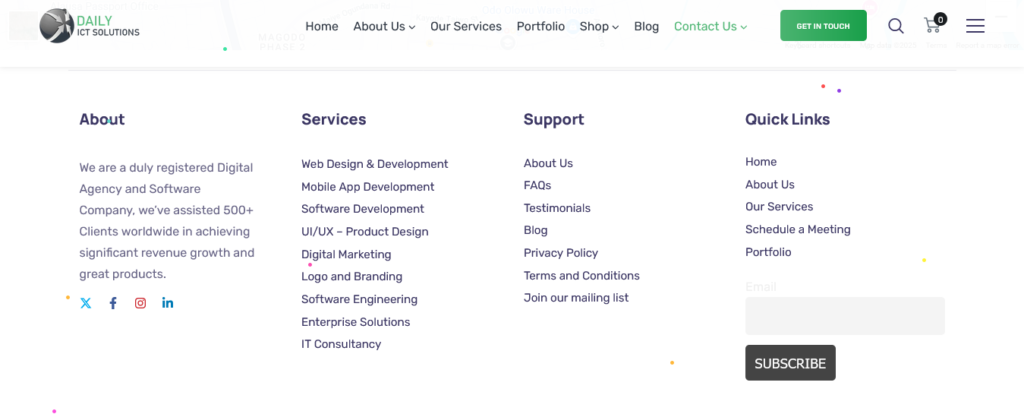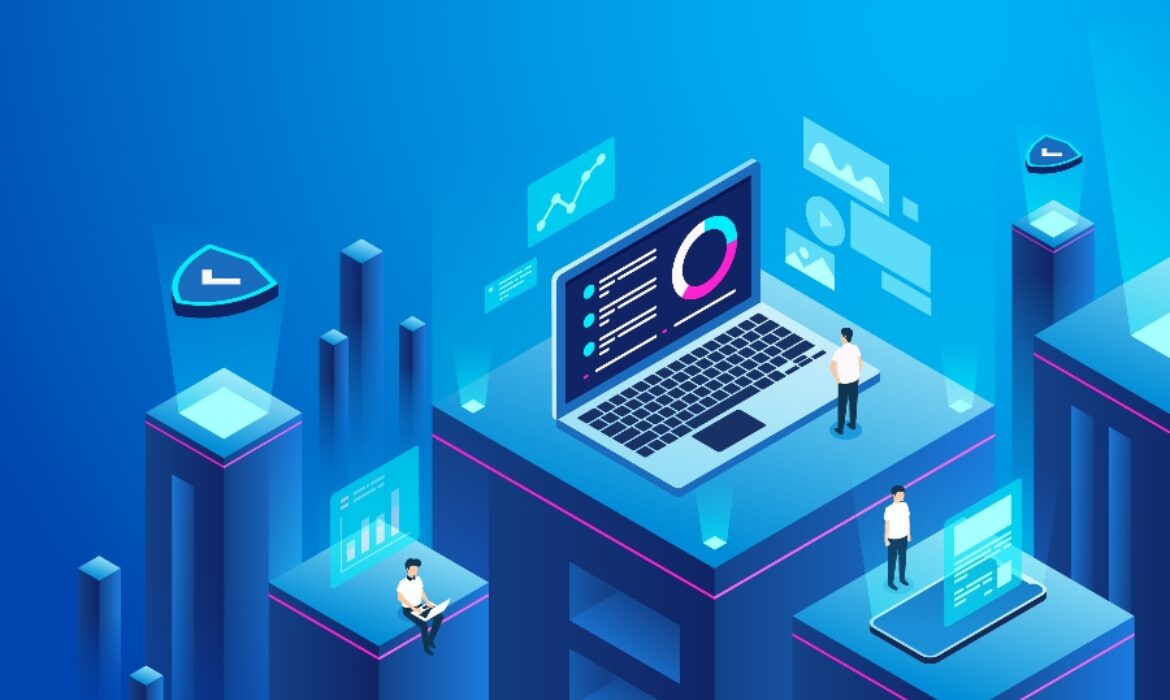Breakthroughs in Technology – April 2025
The world of technology never stands still. As we dive into April 2025, the air is buzzing with excitement over some groundbreaking advancements that are reshaping the future. From artificial intelligence and space exploration to innovations in electric mobility, here’s a look at the key highlights.
Artificial Intelligence: Smarter, Faster, Everywhere
AI continues to break barriers, enhancing industries and making our lives more connected. This month, AI algorithms are achieving unparalleled efficiency in diagnosing diseases, enabling faster and more accurate medical treatments. On the creative side, generative AI tools are inspiring artists and writers, proving that the line between human creativity and machine intelligence is becoming increasingly blurred.
Space Exploration: Reaching for the Stars
NASA is gearing up for its most ambitious mission yet, aiming to explore planets far beyond our solar system. Utilizing next-generation propulsion systems, this mission promises to uncover new possibilities for interplanetary colonization and resource exploration. Private space firms are also playing a pivotal role, pushing the boundaries of space travel for both research and commercial purposes.

Electric Cars: Turning the Corner
The electric vehicle (EV) sector is experiencing transformative changes. Breakthroughs in battery technology mean electric cars can now travel longer distances on a single charge—some models exceeding 1,000 kilometers. Charging times are dropping significantly, with ultra-fast chargers providing full power in less than ten minutes. Coupled with expanding charging infrastructure, EVs are truly becoming the vehicle of choice for eco-conscious consumers.
Conclusion
As we move forward, the electric vehicle revolution is more than just a trend—it’s a necessity. The innovations of April 2025 highlight a future where mobility is smarter, cleaner, and more inclusive. The journey may still have its twists and turns, but one thing is certain: the destination is electrifying.
Are you ready to embrace this electrified future? Share your thoughts and join the conversation! 🚗⚡
What’s Next?
As April unfolds, these technological advancements set the stage for even more innovations. The fusion of AI, space exploration, and mobility promises a future that is smarter, cleaner, and limitless.
What are your thoughts on these breakthroughs?
Tech Stocks Dip: A Challenging Phase for Indian IT Giants
Tech Stocks Dip: A Challenging Phase for Indian IT Giants
The global tech industry continues to face turbulent times, and Indian IT giants like Tata Consultancy Services (TCS) and Infosys are feeling the pressure. Recently, these companies have seen a dip in their stock prices, and the reasons behind this trend reveal broader challenges impacting the sector.
Factors Driving the Decline
One of the main factors contributing to the drop in tech stocks is the growing concern over a potential recession in the United States, which remains one of the largest markets for Indian IT services. The fear of an economic slowdown has led to reduced spending by American clients on IT services, impacting the revenue growth of these firms.
Additionally, the weakening of the US dollar against the Indian rupee has added another layer of complexity. Most Indian IT companies generate a significant portion of their revenue in dollars, and a weaker dollar translates to lower earnings when converted into rupees. This unfavorable exchange rate has placed further strain on their financial performance.
Implications for Indian IT Companies
The decline in stock prices has created ripple effects in the industry. Indian IT companies are known for their strong presence in the outsourcing sector, where they provide services such as software development, IT consulting, and support to clients worldwide. With reduced demand from international markets, these companies may need to recalibrate their strategies to sustain growth.
Moreover, the stock dip reflects broader investor sentiment, which has become increasingly cautious in the face of uncertain economic conditions. The Indian IT sector, often seen as a reliable performer, now faces greater scrutiny as it navigates these challenges.

Navigating the Path Forward
Despite these setbacks, Indian IT companies remain resilient and are exploring avenues to mitigate the impact of external factors. Many firms are diversifying their client base, focusing on emerging markets, and investing in cutting-edge technologies such as artificial intelligence and cloud computing to stay competitive. These strategies are aimed at reducing dependence on traditional markets and opening new revenue streams.
Additionally, companies are revisiting cost optimization measures to maintain profitability during this period of uncertainty. By streamlining operations and leveraging automation, Indian IT firms hope to weather the storm and emerge stronger.
Long-Term Prospects
While the current situation poses challenges, the Indian IT sector has a history of overcoming obstacles and adapting to change. The global demand for digital transformation and technology services remains high, and Indian IT companies are well-positioned to capitalize on these opportunities in the long run. As economies stabilize and businesses resume spending on IT solutions, the sector is likely to regain its momentum.
A Wake-Up Call for the Industry
The dip in tech stocks serves as a reminder of the dynamic and unpredictable nature of the global economy. It underscores the importance of agility and innovation in maintaining competitiveness. For Indian IT giants like TCS and Infosys, this phase is not just a challenge but also an opportunity to redefine their strategies and reinforce their position as leaders in the industry.
Microsoft Turns 50: A Milestone in Tech Innovation
This year marks a monumental milestone for one of the world’s most iconic technology companies—Microsoft. On April 4th, Microsoft turns 50, celebrating five decades of groundbreaking advancements, global impact, and transformative contributions to the tech industry. Founded in 1975 by Bill Gates and Paul Allen, the company began its journey with a simple mission: to put a computer on every desk and in every home. What seemed like an ambitious dream at the time has since become a reality for billions around the world.
Humble Beginnings
Microsoft’s story began with the creation of a BASIC interpreter for the Altair 8800, one of the first personal computers. From these modest beginnings, the company rapidly grew, releasing its first operating system, MS-DOS, in 1981. This laid the foundation for the development of Windows, a product that would go on to dominate the PC market for decades. Windows revolutionized how people interacted with computers, offering a user-friendly interface that made technology accessible to millions.
A Legacy of Game-Changing Innovations
Over the years, Microsoft has introduced a series of groundbreaking products that have defined entire eras of technology. The Microsoft Office Suite, including Word, Excel, and PowerPoint, became essential tools for businesses, students, and individuals alike. The company’s venture into gaming with the launch of the Xbox in 2001 cemented its reputation as a versatile innovator, extending its influence beyond productivity and into entertainment.

In recent years, Microsoft has shifted its focus towards cloud computing with the development of Azure, one of the leading cloud platforms globally. This pivot has allowed the company to stay ahead in an ever-evolving tech landscape, providing solutions for businesses of all sizes. Additionally, its advancements in artificial intelligence, particularly in natural language processing and machine learning, showcase its commitment to shaping the future of technology.
Milestones in Recent Years
As Microsoft celebrates its 50th anniversary, it’s worth reflecting on some of its recent milestones. The company has embraced modern work culture with tools like Microsoft Teams, which became indispensable during the global shift to remote work. The retirement of Internet Explorer marked the end of an era, while the introduction of new AI-powered solutions signaled the beginning of another.
Moreover, Microsoft’s commitment to sustainability and social responsibility has set it apart as a leader not just in technology but also in corporate ethics. The company has pledged to become carbon negative by 2030 and has invested heavily in initiatives that promote digital inclusion and accessibility.
Looking Ahead
As Microsoft steps into its sixth decade, its vision remains clear: to empower every person and every organization on the planet to achieve more. With advancements in AI, quantum computing, and other emerging technologies, the company is poised to lead the next wave of innovation. Its golden anniversary is not just a celebration of its past achievements but also a testament to its relentless drive to shape the future.
A Legacy Worth Celebrating
Microsoft’s journey over the past 50 years is a story of vision, perseverance, and transformative impact. From redefining how we work and communicate to pioneering new frontiers in technology, the company has left an indelible mark on the world. As we celebrate this milestone, one thing is clear: Microsoft’s influence will continue to inspire and shape generations to come.
Boost Your Business: Why Integrating Social Media with Your Website is Crucial
In the digital era, businesses that succeed and understand the power of synergy—especially when it comes to their online presence. Social media and websites are two indispensable tools that can work together seamlessly to amplify your brand, engage your audience, and drive growth. Here’s why integrating social media with your website is a game-changer for your business:
1. Strengthen Your Online Presence
By linking your social media profiles to your website (and vice versa), you create a unified online identity. This makes it easier for customers to discover and connect with your business across multiple platforms. The result? Increased brand visibility, credibility, and recognition in an overcrowded digital space.
2. Drive Traffic Both Ways
When you embed social media links, feeds, or share buttons on your website, you encourage visitors to engage with your social accounts. Likewise, by promoting your website on platforms like Facebook, Instagram, or LinkedIn, you drive social media followers to explore your website. This creates a loop of continuous traffic, helping you maximize your online reach.

3. Boost Engagement
Social media integration brings an interactive and dynamic feel to your website. Embedded live feeds, customer comments, or user-generated content showcase active engagement, building trust with new visitors. Features like “share this post” buttons also make it easy for your audience to spread the word, amplifying your reach organically.
4. Improve SEO Rankings
Search engines love fresh, relevant, and engaging content. Social media integration helps drive more traffic to your website, increasing its authority and improving your search engine rankings. Combined with strategic content marketing, it’s a powerful recipe for enhanced online visibility.
5. Simplify Customer Interaction
Many customers prefer reaching out via social media platforms due to their ease of use and immediacy. By integrating social media tools like live chat or direct message links, you make it easier for customers to connect with you. Quick response times can foster stronger relationships and improve customer satisfaction.
6. Leverage Insights and Analytics
Social media platforms provide valuable insights into customer behavior, preferences, and demographics. When integrated with your website, you get a holistic view of your audience, enabling you to tailor your content, products, and services to their needs. This helps you make data-driven decisions that drive growth.

Why Every Business Needs a Website: A Digital Must-Have
In today’s fast-paced and interconnected world, having a physical location or a social media page is no longer enough for businesses to thrive. A website has become an essential tool, not just for establishing credibility, but for unlocking opportunities that can propel your business forward. Here’s why:
1. Online Presence and Credibility
A website serves as the digital face of your business. It’s often the first point of contact for potential customers searching for your products or services online. A professional and well-designed website can build trust, enhance your brand’s image, and prove that your business is legitimate. Think of it as your modern-day business card—available to anyone, anytime, anywhere.
2. Accessibility 24/7
Unlike physical stores with limited hours, a website works round the clock to represent your business. Customers can access information, make purchases, or inquire about services at their convenience. This accessibility helps expand your reach, allowing you to attract and retain more customers without being tied to a 9-to-5 schedule.
3. Expanding Your Market
With a website, your audience isn’t limited to just your local community. It gives you the ability to break geographical barriers and reach people from across the globe. Whether you’re targeting niche markets or aiming for international success, your website acts as a gateway to new opportunities.

4. Enhancing Customer Experience
A website allows you to cater to your customers’ needs more efficiently. Features like FAQs, live chat support, product reviews, and detailed descriptions make it easy for customers to navigate your business offerings. By streamlining the user experience, you can create loyal relationships that stand the test of time.
5. Cost-Effective Marketing
Gone are the days of relying solely on expensive traditional advertising. With a website, you can leverage cost-effective digital marketing strategies like SEO, content marketing, and social media integration to drive traffic, increase visibility, and boost revenue. Your website is the hub where all these efforts converge.
6. Data Insights
A website doesn’t just help you showcase your business—it provides valuable insights into customer behavior. With analytics tools, you can understand what’s working and what’s not, enabling you to adapt and grow your business effectively.
Conclusion
In the digital age, a website is more than just an accessory for your business—it’s a necessity. It opens doors to growth, builds trust, enhances accessibility, and connects you to the wider market. Whether you’re a small start-up or an established enterprise, investing in a website is investing in the future of your business.
Are you ready to create a website that works as hard as you do? Let’s make it happen at https://dailyictsolutions.com and watch your business thrive.
Taiwan’s Tech Talent in the Crosshairs: The Growing Threat of Talent Poaching
In the high-stakes world of technology and innovation, talent is everything—and it seems China is taking drastic measures to secure it. Recent investigations have revealed that some Chinese companies are secretly recruiting top Taiwanese tech professionals through elaborate schemes. By setting up disguised entities in places like Singapore and Samoa, these firms have sidestepped Taiwan’s hiring restrictions, attracting experts from major players like Intel and Microsoft.
One such company, Yunhe Zhiwang (Shanghai) Technology Co., is focused on developing cutting-edge network chips. These chips are pivotal to China’s ambitious “Data East, Compute West” initiative—a project aimed at relocating data centers to optimize energy use. Another firm, Shenzhen Tongrui Microelectronics Technology, even managed to gain recognition in Taiwan before its covert affiliations came to light.
Why does this matter? For Taiwan, these professionals aren’t just employees—they’re the backbone of its thriving tech sector. Losing them to Chinese companies poses a dual threat: it risks weakening Taiwan’s position as a global tech leader while potentially advancing China’s geopolitical and military objectives.
As this story unfolds, it’s clear that the battle for talent isn’t just about innovation—it’s a critical piece of the geopolitical chessboard. This is a stark reminder of the fine line between collaboration and competition in today’s interconnected tech world.
Top Technology Trends Shaping 2025
As we step further into 2025, technology continues to redefine the way we live, work, and interact. Here are some of the most exciting trends that are making waves this year:
Great! Let’s delve deeper into one of these fascinating technology trends from 2025. Here’s a more detailed look:
Agentic AI
Agentic AI refers to autonomous AI “agents” that can perform complex tasks independently, without constant user input. These agents are transforming industries, from logistics—where they manage operations and optimize efficiency—to healthcare, where they assist in diagnostics and patient care. For example, self-driving cars, powered by Agentic AI, are revolutionizing transportation by enabling safer and more efficient travel. The ability of these systems to learn, adapt, and execute tasks autonomously sets them apart from traditional AI models.
Neuromorphic Computing
Neuromorphic computing is inspired by the architecture of the human brain, using artificial neurons to process information. This approach is boosting AI and machine learning applications by significantly improving processing speed and energy efficiency. It’s paving the way for more advanced solutions in robotics, real-time data analysis, and even natural language processing. For example, neuromorphic chips can enable smarter sensors for IoT devices, allowing them to process data directly at the source.

Extended Reality (XR)
Extended Reality encompasses VR, AR, and MR, merging the digital and physical worlds. In education, students are experiencing immersive simulations, such as virtual anatomy classes for medical training. In retail, AR is enabling customers to try products virtually before making a purchase. The potential applications of XR continue to expand across industries, making it one of the most versatile trends.
Post-Quantum Cryptography
With the advent of quantum computing, traditional encryption methods face vulnerabilities. Post-quantum cryptography is being developed to safeguard sensitive data from quantum attacks. It is especially crucial for protecting financial transactions, government communications, and healthcare records in the future.
Synthetic Media
AI-generated content is shaping the entertainment, marketing, and media industries. Synthetic media can create realistic videos, virtual influencers, and personalized advertisements. While it offers vast creative potential, it also raises ethical concerns around misinformation and authenticity.
Green Energy Technologies
As technology grows, so does the need for sustainable energy solutions. Green energy innovations, like advanced solar panels and energy-efficient data centers, are addressing the environmental impact of tech advancements. For instance, AI-powered grid management systems are optimizing energy distribution to reduce waste.

The Importance of Software Development in Driving Business Success
In today’s fast-paced digital world, software development plays a critical role in shaping business operations and strategies. Companies across industries are leveraging custom software solutions to streamline processes, enhance customer experiences, and gain a competitive advantage.
Why Software Development Matters
- Increased Efficiency: Custom software optimizes workflows by automating repetitive tasks, reducing manual errors, and saving time.
- Personalized Customer Experience: With tailored solutions, businesses can cater to their clients’ unique needs, fostering loyalty and satisfaction.
- Scalability: Software development enables businesses to adapt and scale their operations as they grow, ensuring long-term sustainability.
- Cost-Effectiveness: Investing in software can reduce operational costs over time, maximizing return on investment.


Trends Shaping the Future of Software Development
The software development industry is constantly evolving, embracing trends like:
- Low-Code and No-Code Platforms: Empowering businesses to develop applications with minimal coding expertise.
- Micro services Architecture: Allowing for the creation of scalable and independent modules that work together seamlessly.
- IoT Integration: Connecting devices and systems to improve data analysis and decision-making.
Software Development Best Practices
To ensure a successful project, developers and businesses should:
- Embrace Agile Methodologies: Promote collaboration and adaptability for continuous improvement.
- Prioritize Security: Implement measures to protect user data and prevent breaches.
- Focus on User-Centered Design: Create intuitive and accessible solutions that meet end-users’ needs.
Final Thoughts
Software development is more than just a technical endeavor—it’s a strategic investment in the future of a business. By embracing innovative practices and staying attuned to industry trends, companies can unlock new opportunities for growth and success.
Let me know if you’d like this tailored further or paired with additional visuals!
The Evolution and Impact of Software Development in the Digital Age
In the rapidly evolving world of technology, software development has emerged as the backbone of innovation, shaping how we live, work, and connect. From streamlining complex processes to enabling groundbreaking advancements, the impact of software development is far-reaching and transformative.
The Role of Software Development
Software development is more than just coding—it’s the art of problem-solving, creative thinking, and collaboration. Developers design systems and applications that power industries, foster communication, and enhance productivity. In today’s interconnected world, software solutions are vital for businesses seeking competitive edges and individuals pursuing convenience and efficiency.
Trends Driving the Industry Forward
The software development landscape continues to grow, driven by cutting-edge trends such as:
- Artificial Intelligence & Machine Learning: Revolutionizing industries with predictive analytics, automation, and smarter applications.
- Cloud Computing: Offering scalable solutions and seamless accessibility for individuals and enterprises.
- DevOps: Enhancing collaboration between development and operations teams for faster, more reliable software delivery.
- Agile Methodologies: Encouraging flexibility and iterative improvements in development processes.

Challenges in Software Development
While the opportunities are boundless, challenges like cybersecurity threats, scalability issues, and user experience demands are ever-present. Developers must stay ahead of evolving technologies and maintain a customer-centric approach to address these hurdles.
The Future of Software Development
Looking ahead, software development is set to embrace technologies like quantum computing, augmented reality, and blockchain. These advancements promise to redefine what is possible, unlocking new frontiers for innovation.
Conclusion
Software development is a dynamic and exciting field, holding immense potential to shape the future. Whether it’s creating intuitive apps for personal use or complex systems for enterprises, developers are the architects of the digital age.
How OKR and project management work together
One of the most common questions we get asked at Perdoo is how OKR and Project Management work together. OKR is a great framework for focusing on achieving results rather than completing tasks, but this doesn’t mean there’s no place for day-to-day tasks in OKR. They work together.
If you’re already familiar with the OKR framework, you’ll know an Objective sets your focus. An Objective describes a point in the future you want to get to which is different from the status quo. Your Key Results are things you measure, that have a target, and indicate whether or not you’ve reached your Objective.
Putting your plan into action
You’ve decided where you’re going, and how you’ll know if you’re on the right track. Now it’s time to put your OKRs into action and plan the work you’ll need to do. This is the work you’ll focus on that will influence your Key Results and eventually lead you to your Objective. This is where OKR and Project Management combine.
Many companies, teams, and individuals already use tools like task managers or to-do lists to manage the work they do. With larger teams or more complex work dedicated project management tools often come into play. These tools break down activities into Projects containing individual tasks with roles, responsibilities, and due dates.
If you’re using a project management tool, you’re probably wondering by this point if OKR is just another layer of complexity; extra work you need to do that can already be managed within your current processes. In fact, Project management is simply a way of organizing things that need to be done, while OKR takes care of motivation, direction, and measurement. In Perdoo, we call projects “Initiatives”.
Here’s an example:
A Games company decides it’s identified a huge opportunity for a new mobile game in an untapped market.
The Marketing team creates a Q1 OKR with a 3-month timeframe.

To achieve these ambitious OKRs the Marketing team will need to put together an action plan covering all the Projects they need to get done to reach their goals.
How OKR and Project Management connect
With these OKRs in place, the role of Project Management now comes into play and the Marketing team can spend time planning the exact steps, tasks, and activities they’ll need to do for their Objective to be a success.
One Project could be:
Create a multi-channel marketing campaign to encourage people to leave App Store reviews
Tasks could include:
- Create a campaign plan
- Run kick off meeting
- Brief creative team
- Review campaign creative
- Create in-app messages
- Create campaign emails
- Add campaign messaging to website
- Set up campaign reporting
- Create press release
- Connect with journalists
- Launch campaign
- Review campaign
In the example above, OKR and Project Management work together. Projects and Tasks become the “output” of the OKR and the Key Results the “outcome”.
It’s important to note here that a common mistake many people make when setting Key Results is to confuse them with actions, tasks or projects, or use Key Results as a kind of to-do list. The reason why this is a bad idea is that Key Results should always contain a metric and they should not be within your direct sphere of influence. “Running a project kickoff meeting” has no relationship to whether or not you’ve actually “Grown your game from launch to leader”. It’s something you do, but also something you could do 100 times with no effect on the intended Objective.
If you achieve “>4 stars on over 85% of all your reviews”, however, that’s a pretty good indicator you’re on your way to “growing your game from launch to leader”.
[cta heading=”Track OKRs alongside your projects” buttonlabel=”Get your FREE Perdoo account” buttonlink=”#start-for-free”]Conclusion
OKR is a fantastic framework for setting goals, and Project Management systems are fantastic tools for getting work done. When they’re combined you have a complete system for managing and measuring all the work you do, from strategy to execution to success.
For more on OKR check out our OKR crash course, a great resource for anyone getting started, or for team leads who want to introduce OKR to their employees.
Source: perdoo









